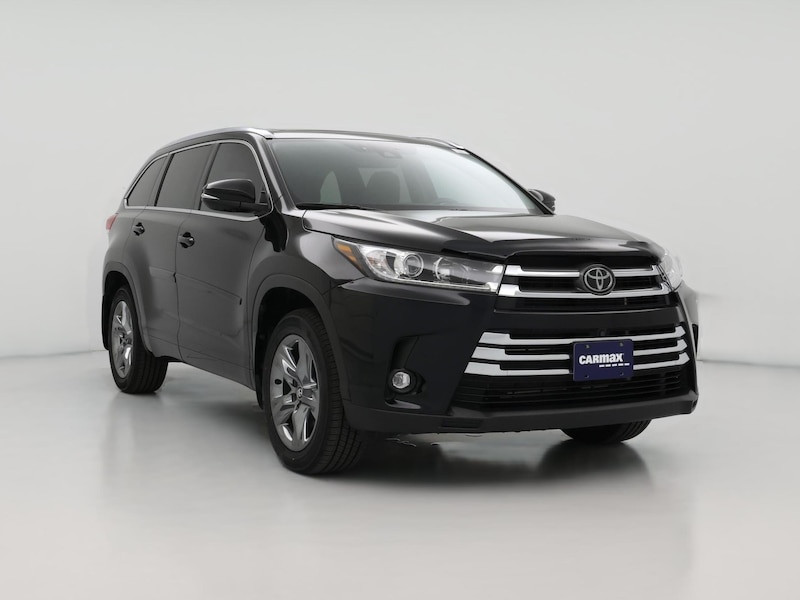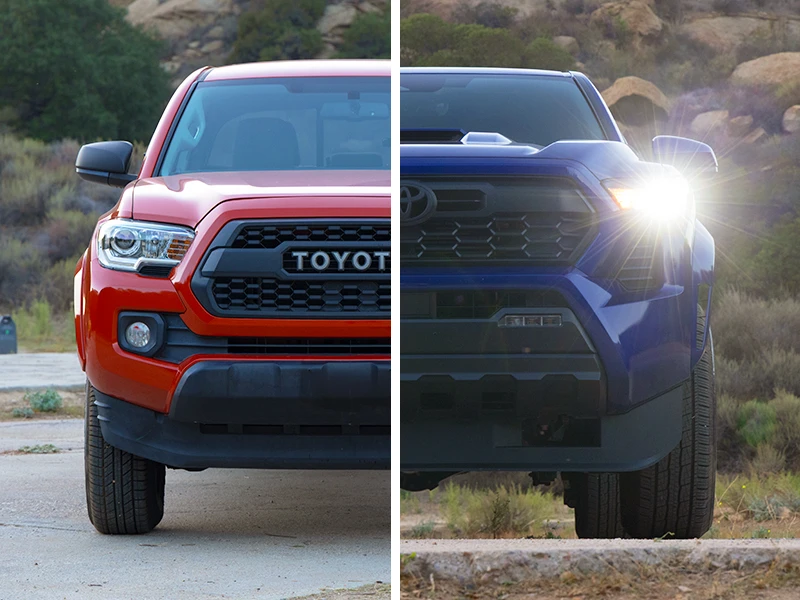Midsize crossovers go head-to-head.

Adventure awaits—once you find the right vehicle to accompany you and your crew. Consider two popular midsize SUVs: the Honda Pilot and Toyota Highlander.
Launched in 2003, the Pilot is one of Honda's best do-it-all SUVs. The Toyota Highlander dates back to 2001 and also brings a lot to the table. The third generation of the Pilot is its most recent (2017-forward), while the Highlander kicked off a fourth-generation version in 2020.
Take a look at this comparison, and you'll find a lot to like about both the Honda Pilot and Toyota Highlander. These feature-rich SUVs bring some of the best elements of their respective brands. Review the key specs and highlights of each to help you find your next vehicle.
This article is part of our series comparing used SUVs. Looking for more spacious SUV options? Check out these:
Side-by-Side Comparison

2019 Honda Pilot | 2019 Toyota Highlander | |
|---|---|---|
Average Price | $32,000 | $32,000 |
Performance | ||
Base Engine | 3.5L V6 | 2.7L four-cylinder |
Horsepower | 280 hp | 185 hp |
MPG | 22 mpg combined | 22 mpg combined |
Towing | 3,500 lbs (FWD); 5,000 lbs (AWD) | 1,500 lbs (4-cyl); 5,000 lbs (V6) |
Interior | ||
Seating | 8 | 8 |
Front-seat Legroom | 40.9 inches | 44.2 inches |
Rear-seat Legroom | 38.4 inches | 38.4 inches |
Cargo Space | 16.5 cu ft | 13.8 cu ft |
Total Cargo Space | 83.9 cu-ft | 83.7 cu-ft |
Rating | ||
Tailpipe Emissions | 388 g/mile | 407 g/mile |
NHTSA Safety Rating | 5/5 | 5/5 |
Certain vehicles may have unrepaired safety recalls. Click here to look up a specific vehicle.
Features and Trim Options
Honda Pilot
The Honda Pilot is a midsize crossover with great features and options. Standard features on all 2017-2020 base models include:
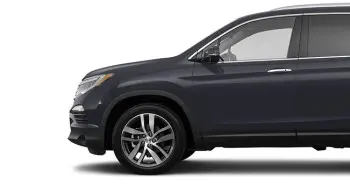
Cloth seating surfaces
Air-conditioning
Five-inch central display screen
Automatic LED headlights (2019+)
Suite of driver aids, including adaptive cruise control, frontal collision warning with automatic braking, road departure mitigation, lane-keeping assist, and automatic high-beam assist (2019+)
Rearview camera
Toyota Highlander
Not to be outdone, the Toyota Highlander is just as well-equipped. Standard features on 2017-2020 base model Highlanders include:

Cloth upholstery
6.1-inch touchscreen (8-inch for 2020+)
Apple CarPlay® and Android Auto™ integration (2020+)
Heated mirrors
Tri-zone automatic climate control (2020+)
Windshield wiper de-icer
Suite of driver aids, including automatic high beams, adaptive cruise control, lane departure intervention, and forward collision mitigation with automatic emergency braking
Five USB ports
Engine Options
All 2017-2020 Honda Pilots come with a single-engine option: a 3.5L V6 that produces 280 hp.
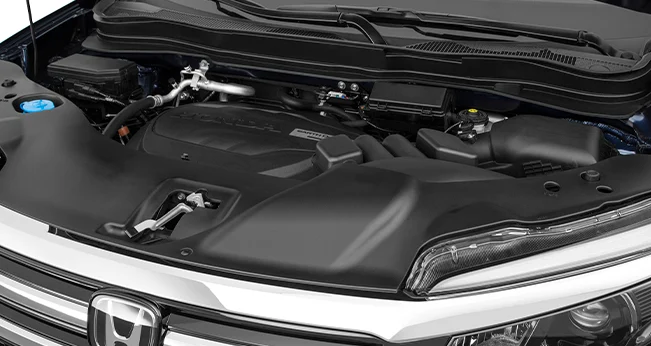
The 2017-2019 Highlander starts with a base 2.7L four-cylinder engine that produces 185 hp. There's an optional 3.5L V6 with a healthy 295 hp, which became the standard (and only) engine starting in 2020.

Fuel Economy
The Honda Pilot has a consistent mpg across 2017-2020 model years due to the fact that it uses the same 3.5L engine. The 2017-2020 Pilot gets an EPA-estimated 22 mpg combined for AWD models and 23 mpg combined for FWD models.2
The Toyota Highlander's mpg varies depending on the model year and drivetrain. 2017-2019 V6-powered models get an EPA-estimated 22-23 mpg combined, depending on trim.2 The 2017-2019 four-cylinder Highlander gets an EPA-estimated 22 mpg combined, and the 2020 V6 Highlander gets an EPA-estimated 23-24 mpg combined, depending on trim.2
Towing
A small boat, jet ski, or camper can really liven up a long weekend. The 2017-2020 Honda Pilot has an estimated towing capacity of 3,500 lbs with FWD and an estimated 5,000 lbs with AWD, when properly equipped.3
The 2017-2019 four-cylinder Highlander can tow an estimated 1,500 lbs, and 2017-2020 V6 models can tow an estimated 5,000 lbs, when properly equipped.3
Tech Features
Technology has made huge gains over the past several years, and it's not uncommon to see impressive tech in even the base trims of modern vehicles.
Standard tech features on all 2017 and newer Honda Pilots include:
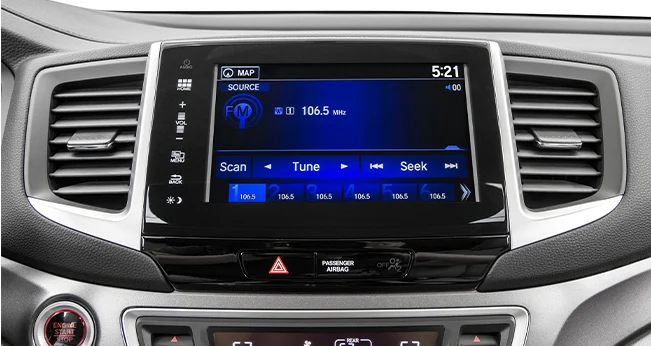
Five-inch touchscreen display (eight-inch on EX trim and up)
Apple CarPlay and Android Auto integration (EX trim and up)
Bluetooth® and USB connectivity
Navigation (optional)
Rear-seat entertainment (optional)
Rearview camera
The 2017-2020 Toyota Highlander is also loaded with a great mix of the latest tech. You'll find features like:

6.1-inch touchscreen interface (8-inch is standard for 2020+ but optional prior to that; a 12.3-inch screen is optional for 2020+)
Rearview camera
Apple CarPlay and Android Auto integration (standard for 2020+ but optional prior to that)
Bluetooth® and USB connectivity
Suite of driver aids (standard for 2020+)
Cargo Space
Is cargo capacity an important part of your driving experience? Vehicles like the Pilot and Highlander deliver midsize capabilities, while still being relatively easy to drive and park. All 2017-2020 Honda Pilots feature 16.5 cu ft of cargo space with all seats in place.

Meanwhile, 2017-2019 Toyota Highlander models have 13.8 cu ft of cargo space, which gets bumped up to 16 cu ft for 2020 model years.
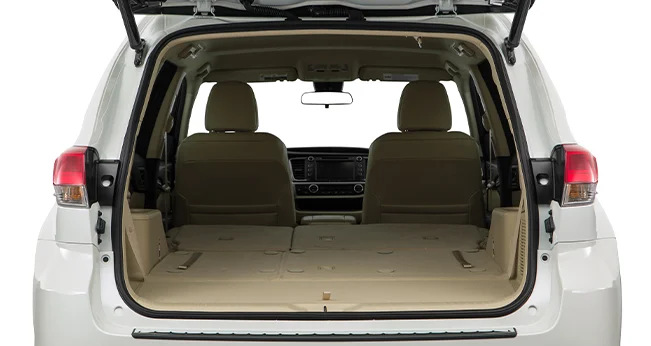
Pricing
The 2021 Honda Pilot and 2021 Toyota Highlander are newer model years and we currently have a limited number in our inventory. See below for average CarMax prices for previous model years of the Honda Pilot and Toyota Highlander.1
Honda Pilot
2016—Average prices less than $24,5001
2017—Average prices less than $27,5001
2018—Average prices less than $29,5001
2019—Average prices less than $32,0001
2020—Average prices less than $36,0001
Toyota Highlander
2016—Average prices less than $26,0001
2017—Average prices less than $28,5001
2018—Average prices less than $30,5001
2019—Average prices less than $32,0001
2020—Average prices less than $37,0001
Safety Ratings
The 2019 Honda Pilot received an overall five-star safety rating from the National Highway Traffic Safety Administration (NHTSA). The 2019 Toyota Highlander also received an overall five-star safety rating from NHTSA. Certain vehicles may have unrepaired safety recalls. Click here to look up a specific vehicle.
2019 Honda Pilot
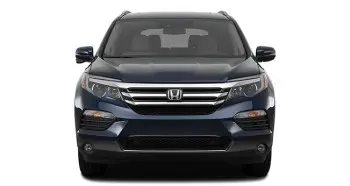
Frontal Barrier Crash Rating Test: A head-on collision between two similar vehicles traveling at 35 mph.
Overall: 4/5
Side Barrier Crash Rating Test: A vehicle standing in an intersection sustains driver-side impact from a vehicle moving at 38.5 mph.
Overall: 5/5
Side Pole Crash Rating Test: A vehicle slides sideways at 20 mph and impacts a tree or telephone pole.
Overall: 5/5
2019 Toyota Highlander

Frontal Barrier Crash Rating Test: A head-on collision between two similar vehicles traveling at 35 mph.
Overall: 4/5
Side Barrier Crash Rating Test: A vehicle standing in an intersection sustains driver-side impact from a vehicle moving at 38.5 mph.
Overall: 5/5
Side Pole Crash Rating Test: A vehicle slides sideways at 20 mph and impacts a tree or telephone pole.
Overall: 5/5
Reliability
According to RepairPal, the Pilot received an overall reliability rating of 3/5, while the Toyota Highlander received 4/5. Keep reading for more details.
Honda Pilot
RepairPal gave the Honda Pilot an overall reliability rating of 3.5 out of 5 stars, which RepairPal describes as average.
Cost: RepairPal reports that the average total annual cost for repairs and maintenance on a Honda Pilot is $542, compared to an average of $573 for midsize SUVs and $652 for all the vehicles RepairPal considered in its dataset.
Frequency: According to RepairPal, Honda Pilot owners bring their vehicles into a repair shop for unscheduled repairs an average of 0.5 times per year, compared to an average of 0.4 times for midsize SUVs and 0.4 times for all the vehicle models RepairPal considered in its dataset.
Severity: RepairPal reported that the probability of a repair being a severe or major issue is 13% for the Honda Pilot, compared to an average of 13% for midsize SUVs and 12% for all the vehicles RepairPal considered in its dataset.
Toyota Highlander
RepairPal gave the Toyota Highlander an overall reliability rating of 4.0 out of 5 stars, which RepairPal describes as above average.
Cost: RepairPal reports that the average total annual cost for repairs and maintenance on a Toyota Highlander is $489, compared to an average of $573 for midsize SUVs and $652 for all the vehicles RepairPal considered in its dataset.
Frequency: According to RepairPal, Toyota Highlander owners bring their vehicles into a repair shop for unscheduled repairs an average of 0.3 times per year, compared to an average of 0.4 times for midsize SUVs and 0.4 times for all the vehicle models RepairPal considered in its dataset.
Severity: RepairPal reported that the probability of a repair being a severe or major issue is 13% for the Toyota Highlander, compared to an average of 13% for midsize SUVs and 12% for all the vehicles RepairPal considered in its dataset.
RepairPal Reliability Ratings are based on the actual cost, frequency, and severity of unscheduled repairs and maintenance on make/model data for select 2010–2019 vehicles. The reliability of a specific vehicle may vary depending on its maintenance and driving history, model year, trim, and features.
*RepairPal Reliability Ratings are provided by RepairPal and CarMax is not responsible for their accuracy. These ratings are based on RepairPal Reliability data as of 12/31/2018. Learn more.
Performance
The Honda Pilot gets standard V6 performance across 2017-2020 model years. That means all Pilots reach 60 miles per hour in around 6.5 seconds (according to the manufacturer, when new).

The Toyota Highlander has a choice of engine options across 2017-2020 model years. The smaller four-cylinder reaches 60 miles per hour in around 8.5 seconds, while the V6 engine gets there in around 7.7 seconds (according to the manufacturer, when new).
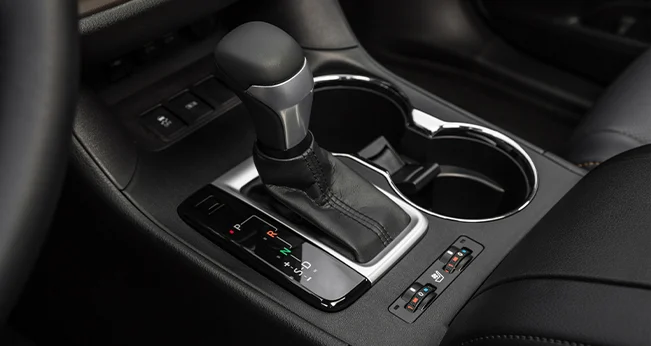
Emissions
The Honda Pilot has varying tailpipe greenhouse gas emissions, depending on the model year.

According to EPA estimates, the 2017 and 2020 Honda Pilot's tailpipe greenhouse gas emissions are 388 grams per mile (FWD) and 407 grams per mile (AWD), both on regular gasoline.
According to EPA estimates, the 2018-2019 Honda Pilot's tailpipe greenhouse gas emissions are 388 grams per mile (FWD) and 408 grams per mile (AWD), both on regular gasoline.
For the Toyota Highlander, emissions also vary depending on the model year.
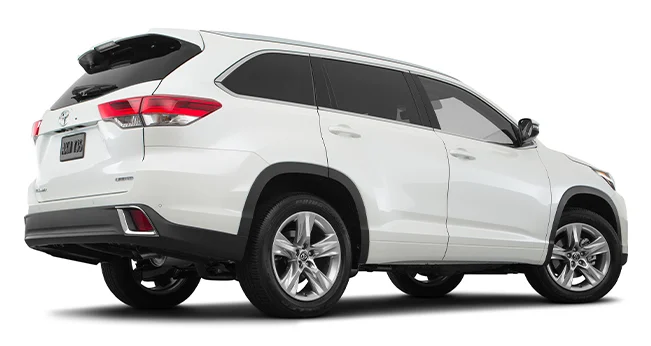
According to EPA estimates, the 2017-2018 four-cylinder Toyota Highlander has tailpipe greenhouse gas emissions of 407 grams per mile, and the 2017-2018 V6 Highlander has emissions of 391 grams per mile (FWD) and 398 grams per mile (AWD), all on regular gasoline.
According to EPA estimates, the 2019 four-cylinder Toyota Highlander has tailpipe greenhouse gas emissions of 407 grams per mile, and the 2019 V6 Highlander has emissions of 391 grams per mile (FWD) and 399 grams per mile (AWD), all on regular gasoline.
According to EPA estimates, the 2020 V6 Toyota Highlander has emissions of 386 grams per mile (FWD) and 387 grams per mile (AWD), both on regular gasoline.
These estimates are based on a brand-new model. Visit fueleconomy.gov for more details.
The Bottom Line
Setting out on a road trip in a midsize SUV like the Honda Pilot or Toyota Highlander is a great way to go. With three rows of seating and a variety of trims and options to choose from, you're sure to find the right vehicle to start your own adventures.
Want to continue your search? Check out these related articles:

